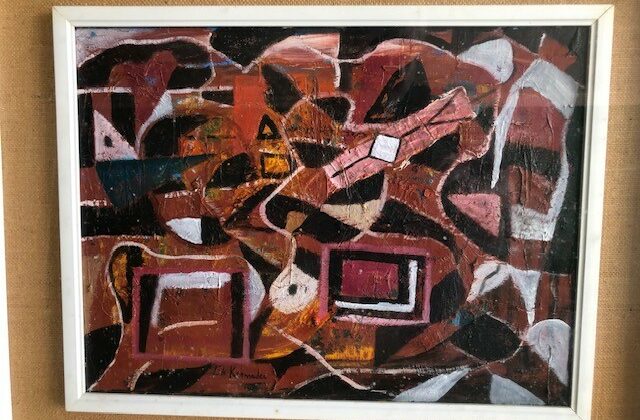GUSTAV KLIMT ARTIST OF THE CENTURY
100 years from his death – Francesco Carelli , University of Milan
Marking the transition from historicism to Jugendstil, Gustav Klimt’s works shaped the beginning of modern art in Vienna. 100 years after his death, the Leopold Museum in Wien pays tribute to the figurehead of the period of “Vienna around 1900” with a comprehensive exhibition divided into eight thematic emphases and illustrating all the periods of the artist’s works by means of some 35 paintings, 90 drawings, 30 photographs and approx. 150 archival documents.
Along with exhibits from the Leopold Museum and the Leopold Private Collection, the exhibition also features numerous works given to the museum by a Klimt descendant as a new permanent loan, as well as four paintings and six drawings from a private collection, which were also entrusted to the museum as permanent loans.
The presentation Gustav Klimt. Artist of the Century traces an arc from Klimt’s beginnings at the height of the Grunderzeit era dominated by historicism, via his artistic paradigm shift and the evolution of his own, individual style from the mid-1890s, when he created his first drafts for the Faculty Paintings for the ceremonial hall of Vienna University, which would cause a scandal. The overview continues with Gustav Klimt as a leading figure of the Vienna Secession, whose members broke with esthetical conventions and paved the way for Jugendstil, and goes on to shine the spotlight on his activities as a sought-after portraitist of the wealthy Viennese bourgeoisie as well as on his highly erotic, symbolistically charged female depictions.
Also on display is a selection of his landscapes created during his regular summer sojourns in the Salzkammergut region, which served to further Klimt’s renown.
DEATH AND LIFE AND THE BRIDE ENTER INTO A DIALOGUE FOR THE FIRST TIME
The exhibition sees two monumental allegorical works by Klimt enter into a dialogue for the first time: Death and Life (1910/11, reworked in 1915/16) has been part of the Leopold Museum’s collection compiled by Rudolf Leopold for 40 years, while The Bride (1917/18) was brought into the collection of the Klimt Foundation in 2013. Since the Faculty Paintings,
Gustav Klimt had addressed the cycle of life and its individual phases. During the last years of his works, and shaped by personal experiences, Klimt started to rework the first version of Death and Life in 1915 and transferred depictions of individual stages of life as solitary figures to his works The Virgin (1913) and The Bride. The paintings, which are both shown in the exhibition, were prepared by Klimt with numerous drawings. The sketchbook for his last allegory has survived, and affords valuable insights into the process of the work’s composition and creation.
The first presentation of drawings along with the extant sketchbook and the painting
The Bride from the collection of the Klimt Foundation allows visitors to delve
directly into the fantasies and visions of this exceptional artist. The painting further
affords scope for new interpretations and, through its Expressionist accents,
links Gustav Klimt as a pioneer of modernism in Austria with his successors Oskar
Kokoschka and Egon Schiele.
CULTURE STRUGGLE SURROUNDING THE SCANDALOUS FACULTY PAINTINGS
Gustav Klimt’s commission to create Faculty Paintings for Vienna University provoked a dispute that would last several years. In 1894 the artist was asked by the ministry of education to conceive three ceiling paintings for the auditorium of the university, as well as,,ten spandrel paintings. Klimt presented the first of the three monumental works, Philosophy,in an unfinished version at the 7th Secession Exhibition in 1900. His rendering of Medicine was exhibited in 1901 at the 10th Secession Exhibition, while his last Faculty Painting,Jurisprudence, was shown at the 18th Secession Exhibition in 1903.
The works mostly received scathing criticism from the professors and art critics, as Klimt dispensed with any glorification of the sciences and instead made man’s irrational and instinctual nature the focus of his depictions. After some ten years of fierce attacks, the artist resigned from the commission in 1905 and reimbursed the state his fee.
SUMMER SOJOURNS ON THE ATTERSEE WITH EMILIE FLÖGE – KLIMT’S LANDSCAPES
Gustav Klimt’s regular summer sojourns on the Attersee with Emilie Floge and her family set in around the turn of the century. Klimt’s need for privacy and distance was especially great after the controversy caused by his Faculty Paintings. Far from the city and surrounded by intimate friends, Klimt found both relaxation and inspiration.
Klimt’s landscapes make up around one quarter of his painterly works. They were
Predominantly created in nature, or at times from photographs and picture postcards
in his Vienna studio. The artist wanted to depict a natural environment independent of man that reflects a tranquil atmosphere – his interest in a symbolic expression and in aspects of timelessness and transience were central to these works.
Emilie Floge is regarded to this day as the inspiring “muse” by the side of the world-renowned artist – and their relationship has been the subject of much speculation. The independent woman accompanied the most prominent artist in the Monarchy at the time as a steadfast companion through personal and creative highs and lows. One of the most influential fashion designers in Vienna, she ran the salon Schwestern Flöge from 1904 together with her sisters Helene and Pauline. Inspired by new movements and tendencies, she pursued herown artistic path alongside Klimt. Both of them were eminent representatives and trendsettersespecially for the Wiener Werkstatte founded in 1903 and the workshop’s concept of the Gesamtkunstwerk, or universal work of art.
KLIMT AS A PAINTER OF WOMEN – FEMALE PORTRAITS AND EROTIC DRAWINGS
Gustav Klimt is considered the painter of women par excellence, and he devoted a large share of his works to female depictions. His range of female types is multifaceted and includes the erotic-fetishized woman, the demonized femme fatale, the allegorically-mythically charged female creature of nature, and finally the idealized lady of society. This last type earned him a reputation as a painter of distinguished female portraits in fin-de-siecle Vienna.
Like the paintings themselves, the drawings and studies accompanying these female portraits merely outline the individuality and personality of the sitters.
Among the approximately 4,000 graphic works left behind by Gustav Klimt are numerous highly erotic female depictions, which earned the artist the reputation of an “eroticist”. The majority of them were neither exhibited during his lifetime, nor were they intended to be sold. They primarily served as studies for paintings and are testament to his almost obsessive exploration of the essence of “the feminine”.




